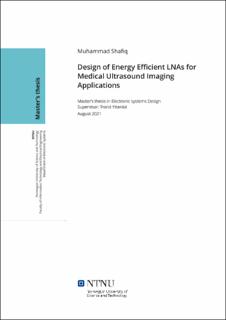| dc.description.abstract | The developement of modern intravascular ultrasound imaging has played a vital role in the field of medicine. These probe devices senses and amplifies the low frequency and low quality signals like ECG, EMG, EEG and EOG etc. All of these signals measure biopotentials or electrical output resulting by different activities of a human body. The challenge is to enhance the better quality, energy efficiency and minimized area which involves a complete complex design phase. Hence the LNA is the most critical fron-end element in a sensing probe. The trade-off among various parameters like speed, size, power consumption and noise performance, make it even more challenging for the analog designers.
This thesis presents the design and simulations of a front-end low noise amplifier by adopting two different design architectures.
The two proposed architectures of fully differential Operational Transconductance Amplifier (OTA) are implemented by using a commersially available 130 nm CMOS technology. The Cadence design tool has been utilized in order to complete the design phase. The gm/Id methodology has been adopted while sizing the transistors.
The performance of the both topologies have been tested and verified by using corners and the Monte Carlo simulations. In the end, both of the topologies are compared to each with respect to the defined figure-of-merit. | |
